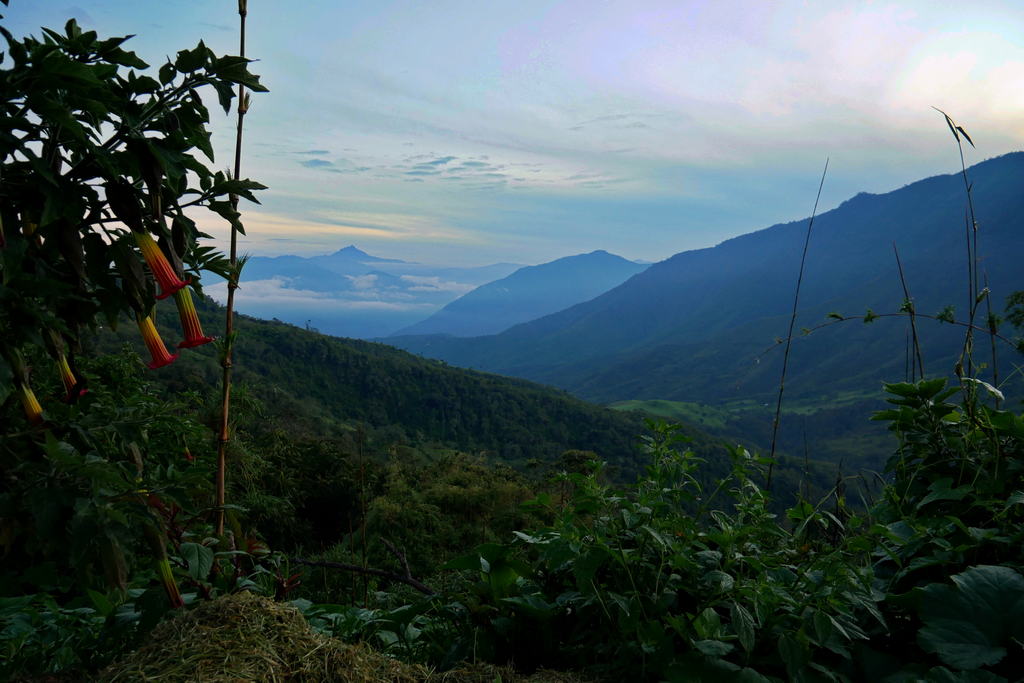Just over a year ago I travelled north-west of Quito to two very distinct cloud forest reserves. These are the dense forests lying on the steep slopes of the Andes, sustained by mists swept in from the moist Pacific. They are highly diverse and rich in orchids, bromeliads and many bird species. Little did I know this would be my last big trip before the pandemic struck.
Yunguilla

The first stop was Yunguilla, only an hour by car from Quito, via Calacali and Nanegalito. Yunguilla is a picturesque hamlet off-the-beaten track in Ecuador’s cloud forest. The close-nit community lies on the slopes of the Andes between the Pululahua and Maquipucuna reserves, on the way to the Esmeraldas coast. The region was once given to cattle farming and smuggling but now are one of the few communities that have developed sustainable community-based tourism in Ecuador.
Yunguilla is home to about 80 families who take in homestay guests, which helps fund protection of the surrounding cloud forest. One night was not long enough, to see all the trail walks and explore the flora and fauna. I did visit the community restaurant, sample food with local cheese and jam and a walk through the co-operative organic farm. The octagonal restaurant has amazing views of volcanos and ripples of green valleys.

The main attraction was staying with a local family, eating dinner in their home, enjoying moments with unassuming people, the locals are dedicated to community tourism. Before arriving, I was apprehensive that the accommodation would be basic and dorm style, but the house I stayed in was spacious, comfortable and very clean. The modern but rustic architecture is very homely. There is a variety of accommodation you can choose from including camping. The food was substantial, plenty of soup, chicken, rice, potatoes, corn, beans, bread, eggs…

Long-term volunteers can help-out in the cheese or jam factories, the greenhouse or general horticulture. Teaching English is another popular choice for volunteers, as language is a key skill for those working in tourism. Tourists can partake in creating hand-painted cards which are illustrated by local children and made with home-made paper from natural fibres.

At an altitude is 2650 metres above sea level, the climate is Spring-like and pleasant with outstanding views. At night, the entire village congregates around a volleyball court, where they take the game very seriously. Beer is available for the less athletic minded.
I would highly recommend anyone traveling to Ecuador to stay in this community, at least for a night. For nature lovers, the Andean cloud forest is the place to see hummingbirds, the toucans and spectacled bear if lucky.
Maquipicuna reserve
After a hearty breakfast in the scenic restaurant, I was met by Rodrigo Ontaneda the co-founder of Maquipicuna reserve. We drove on a dirt road for about 45 minutes down into the tropical lowlands. I wimped-out of taking the hiking trail through the jungle which follows the route of the yumbos, the indigenous inhabitants who lived here before the Incas. Maquipucuna is an impressive 6,000 hectares (15,000 acres) tract of pristine forest that is protected and managed by an NGO. The reserve is in the mega diverse Chocó Andino region. It is home to 45 species of mammals, 250 species of butterflies, 1000 species of moths, more than 2,000 species of plants and 400 birds. I was on a quest to see the spectacled or Andean bear, more famously known as Paddington. Researchers are identifying individual bears and studying their behaviour.

Rodrigo told me the history of the place which began as a personal mission over 30 years ago, when he and his partner Rebeca Justica were inspired to save the forest from loggers and miners. They built a small rustic bamboo lodge for scientists and visitors. Initially tourism was seen less important than conservation, but recently its role is seen as crucial to sustainable growth. There are now two very comfortable cabins with en-suite facilities, king-size beds and a view of the Umachaca river.

Visitors can hike 40 km of trails, dive into natural pools, visit waterfalls, experience Ecuador’s first coffee-tour, bird-watch, visit the organic gardens, or simply relax in a hammock. Rodrigo showed me plans for new eco-friendly cabins he plans to construct. The friendly staff are all recruited from local communities, so Spanish is the main language, but English-speaking guides are contracted. The food is good hearty Ecuadorian food such as soup with morocho, a kind of rice-like corn, fried plantains, tortillas de yuca and orange cake washed down with locally produced coffee.

I headed-off on the trail with a guide in search of bears. They migrate here in August to October and had recently been filmed by the BBC for a Natural World documentary. Sadly, I was a few weeks late, the only traces left were droppings. They are partial to a kind of fruit that looks like tiny wild avocados (aguacatillo). I did see plenty of butterflies and insects, tropical plants and many birds. It helps to have a local expert to identify these. The cloud forest has a lot of species, but mainly heard not seen.

I also watched a pair of enchanting torrent ducks. They sat upon rocks amid the rapids of the fast flowing stream. They feed upon larvae beneath the rocks and are extraordinary to watch.

The reserve belongs to a foundation which has received funding from international conservation organizations. However, owning the land does not protect it, that is achieved by getting the local communities involved and patrolling the terrain. I hope that the plans to develop tourism take-off as financial support in times of Covid are lean. Initiatives like this are a good example to us all – how to save the planet.
Contact us for information about how to book either place.
Related: Top 10 Places to Visit in Ecuador
Mashpi Lodge Client Review
Like what you read in this blog? Talk to our travel expert to plan your dream trip to South America
Send message